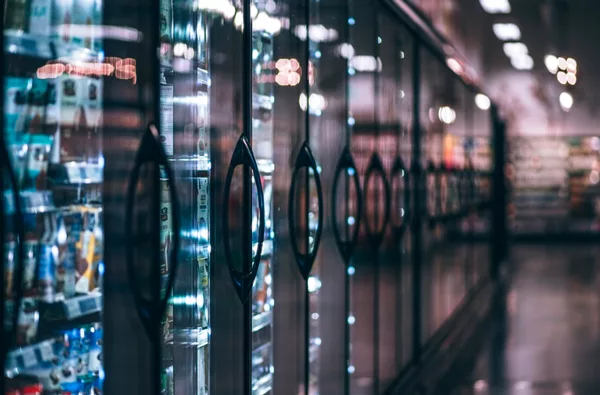Foodservice Finds Sustainability Reduces Costs by 30 Percent

To preserve product and maintain customer loyalty, the foodservice industry has traditionally prioritized inventory, labor management, and ambiance over sustainability (i.e., utility, waste and water usage, and expense). Although most restaurants have efficient equipment in facilities today, they’ve only taken the first steps on a long and transformative journey. Overall, a sustainability focus can reduce spend by 20–30 percent.
More than 80 percent of the $10 billion annual energy bill for the commercial foodservice sector is spent on inefficient food cooking, holding, and storage equipment. According to the National Restaurant Association’s 2018 State of Restaurant Sustainability report, restaurants could be doing more to tackle energy efficiency, waste management, and water usage. For example, less than half of restaurants surveyed use U.S. Environmental Protection Agency's Energy Star-rated refrigerators or low flush toilets, and only 25 percent of restaurants use Energy Star-rated efficient dishwashers.
While untapped efficiencies hurt the bottom line and the environment, resource and data management—coupled with consumer demand—are rapidly changing and becoming necessities. The industry needs to do more than simply buy new equipment. It must embrace new business models, utilize data collection, and evaluate their operations to holistically incorporate sustainability. The ability to harness massive amounts of data from sophisticated control systems monitoring a variety of equipment brings new opportunities for companies to improve performance and mitigate risk. Beyond scarce resources and environmental consequences, more than half—55 percent—of consumers say they consider a restaurant’s food waste reduction efforts an important factor when they choose a restaurant.
The need for sustainability programs is evident, but even the best intentions will fall short without a solid understanding of your current operations. From introducing waste reduction programs to energy efficiency equipment pilots, data compose the backbone of long-term sustainability success. Here are three ways that restaurants can leverage data to derive optimum value across their sustainability initiatives.
Taking Control of Waste
As consumers and governments crack down on waste and recycling regulations, foodservice companies must implement programs that maximize efficient waste practices and stay in compliance. While certain regulations, such as municipalities banning plastic straws, have been making headlines over the last few months, they are slowly rolling out other legislation, including separating organic food waste from inorganic garbage. Companies looking to stay in compliance and avoid major fines must first understand their current waste makeup. By conducting waste audits—scientific studies of waste streams—businesses will understand the data associated with their waste profile, how food waste affects their hauling costs, and where the best diversion opportunities are. Understanding and utilizing this output helps foodservice providers adapt their business models to streamline waste practices and capitalize on their recycling and composting programs in a cost-effective manner.
In a direct attempt to increase efficiency, states have begun regulating waste diversion. For example, California recently mandated a 75 percent reduction in organic waste disposal by 2025, and New York has a longstanding curbside collection program that capitalizes on efficient waste hauler routes and separates trash from organic, compostable materials. Committing to these state regulations sooner rather than later has advantages for businesses, as composting, recycling, and reuse of materials all cut waste management costs, save money on purchasing, and help you avoid major fees and fines.
Piloting New Technologies and Fine-Tuning
Innovation in the restaurant industry is not a new topic, but companies are increasingly piloting and implementing tools that serve as platforms to explore sustainable operations strategies. Panda Express has created an Innovation Kitchen that, among other priorities, works to maximize sustainability in daily operations. For example, this Pasadena location capitalizes on gas and water efficiency and savings by installing efficient stove burners and replacing steam heaters at the buffet with induction technology. Additionally, cloud-connected equipment allows companies to make real-time sustainable adjustments based on transparent data. With ovens and fryers connected, the Panda Express Innovation Kitchen tracks equipment performance in real-time, making the necessary changes to reduce energy output and cut back on costs. By examining the data from this one location, Panda Express can utilize this data scale these changes across its multi-site restaurants.
Looking for quick answers on food safety topics?
Try Ask FSM, our new smart AI search tool.
Ask FSM →
While investing in new technology is necessary for some companies, simple changes can also make a major impact. Hospitality businesses and foodservice operations account for nearly 15 percent of commercial water use in the U.S. On the West Coast, Shari’s Cafe & Pies realized the dipper wells used to clean ice cream scoops were wasting 8 million gallons of water every year through data audits. As a result, Shari’s decided to switch from a perpetual flow of water to a heated demand-based system that reduced water usage by 35 percent and led to 15–18 percent savings on natural gas usage. Because equipment and building sensors are cheaper than they’ve ever been, and data monitoring and analytics are more advanced, restaurants can avoid massive losses in critical resources and capitalize their return on investment.
Preventing Failure to Keep the Lights On
Equipment failure and subsequent repairs require costly downtime and product loss. Actively monitoring equipment performance helps foodservice retailers manage energy consumption and maintenance activities for optimal system performance. This type of monitoring ensures that critical business systems, such as HVAC, lighting, controls, and refrigeration systems, function properly while maintaining a comfortable environment and properly stored food. To further extend the life of equipment and optimize energy usage, organizations can pay attention to load demands and adjust as needed. The first step is to analyze utility bills to identify the seasons during which the peak demand is the greatest—often the hot days of summer. For many facilities, the largest electric load is dedicated to space cooling. Installing sub-meters in a small set of the poorest load factor sites is the most effective way to determine which equipment is driving demand. Once the contributing equipment loads have been identified, facility operators can determine what might be done to sequence or schedule events or processes in order to minimize the simultaneous operation of high wattage equipment.
According to Energy Star, restaurants that invest strategically can cut utility costs up to 30 percent without sacrificing service, quality, or comfort. The ability to capture and analyze unprecedented amounts of resource data holds the key to unlock energy-saving projects, but these projects don’t provide value without continuous monitoring. Data analytics and monitoring is the new foundation to move beyond incremental improvements to real sustainability achievements and significantly greater savings. As consumers continue to demand sustainable business practices across industries, restaurants and foodservice providers must adopt efficiency and sustainability into their day-to-day operations.
Restaurants, now more than ever, need to integrate sustainability and energy efficiency strategies into their business operations and corporate strategy. The road to sustainability is paved in data and without this foundational element restaurants cannot capitalize on all the opportunities these initiatives have to offer.
Marty Sieh is the chief operations officer at ENGIE Insight.







